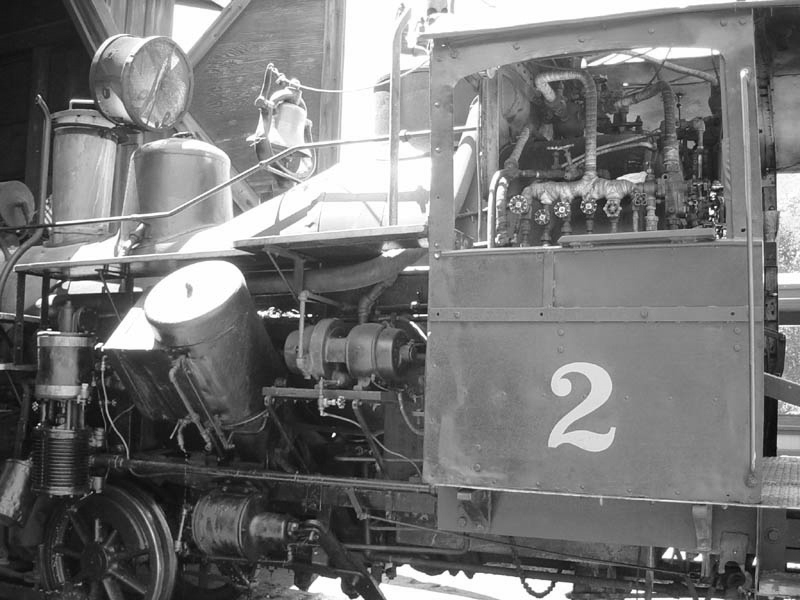#134 Geared Locomotives of Heisler, Shay, Climax
1872
Early examples of small slow-speed 19-century geared locomotives
All three are representative of geared locomotives. The Shay locomotive, designed in 1872 and patented in 1881, and its two variants -- the Climax and the Heisler -- employ small high-speed steam engines geared down to axles on four-wheel trucks. They were suited to slow and heavy hauling with high-tractive effort on the rough and temporary tracks of the lumber and mineral industries. They hauled heavy loads through difficult terrain from about 1890 to 1960 until replaced by highway trucks.
The Heisler locomotive was built by Stearns Manufacturing Company (Erie, Pa.) in 1899. It is a 37-ton locomotive regarded as powerful for its weight, economical on fuel, and easy to maintain. Heislers often burned sawdust waste from sawmills. The Tuolumne is the oldest Heisler type operating, having worked for the Hetch Hetchy & Yosemite Valley Railway during the Gold Rush days and then at the West Side Flume and Lumber Company in Tuolumne, Calif. It was originally called the Thomas S. Bullock.
The Shay locomotive was built by Lima Locomotive Works (Lima, Ohio) in 1912. The Dixiana -- a two-truck, 42-ton Shay, originally owned by Alaculsy Lumber Company -- served on six shortline railroads in the Smoky Mountains before moving west. It was named for a narrow-gauge mining railroad out of Dixiana, Virginia.
The two-truck Climax locomotive was last of its type built by Climax Manufacturing Company in 1928. It was purchased from the Carroll Peak and Western Railroad, is being restored in Los Angeles, and will be returned to the Santa Cruz, Big Trees & Pacific Railway Company.

Landmark Location
Roaring Camp & Big Trees (in service)
Felton, CA
Visiting Info
Daily in summer; weekends and holidays in spring and fall; specials in winter: call 408-335-4400
Ceremony Notes
August 1988
Owner
Roaring Camp & Big Trees
Links
Roaring Camp Railroads
http://www.roaringcamp.com